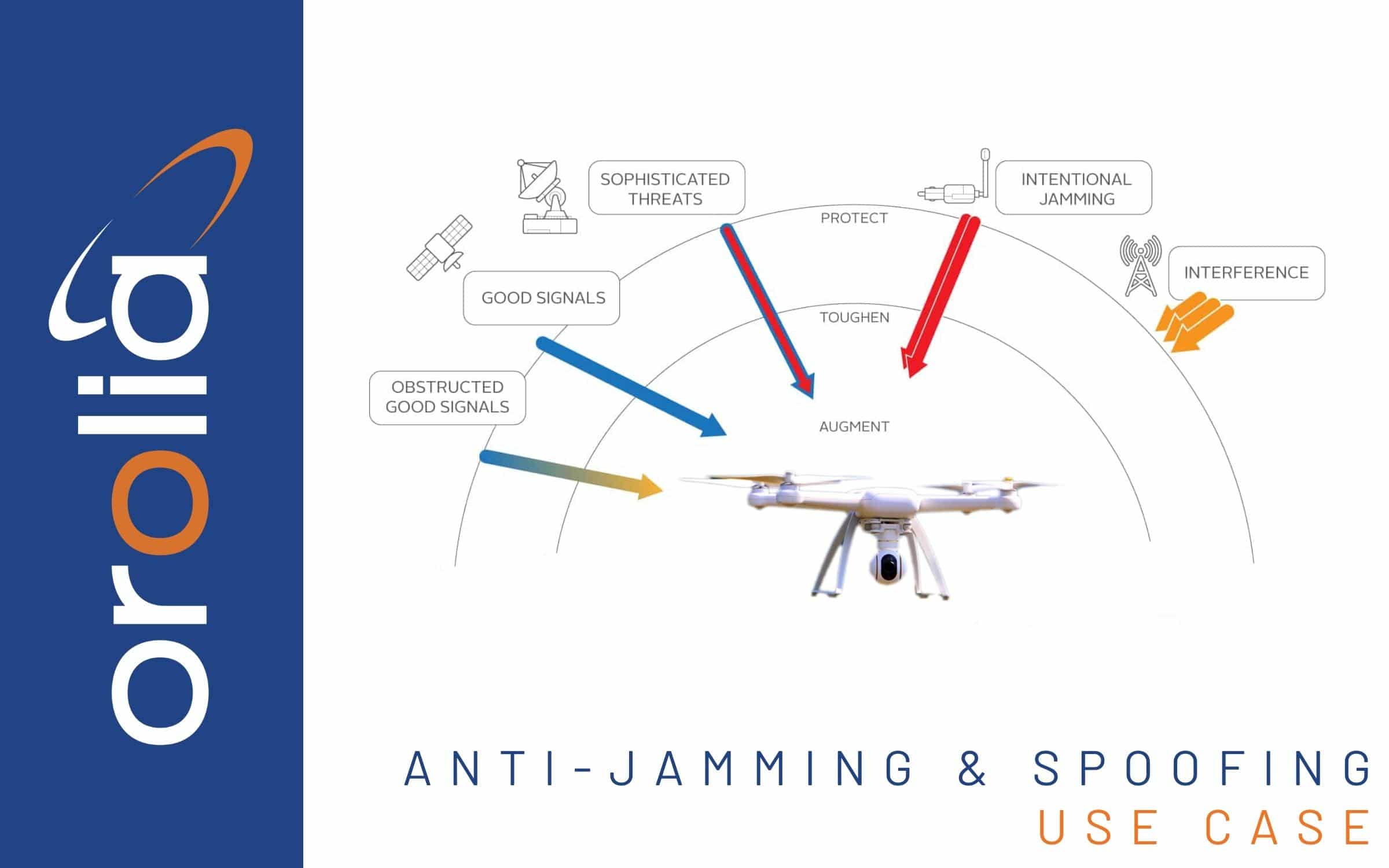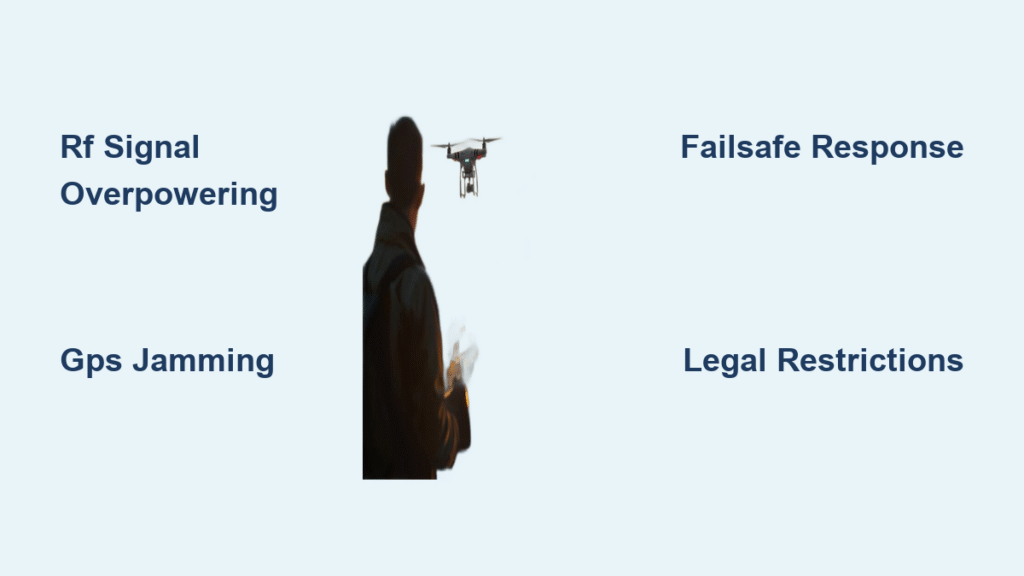Picture a rogue drone buzzing over your secure facility, its camera recording every detail. Within seconds, it wobbles, loses control, and gently lands—neutralized by an invisible force. That force is a drone jammer, and understanding how it works could mean the difference between security breach and successful defense.
This guide breaks down exactly how drone jammers operate, from the electromagnetic physics to real-world deployment tactics. Whether you’re evaluating counter-UAS solutions or simply curious about the technology, you’ll learn the precise mechanisms that bring unauthorized drones to earth. Discover how these devices disrupt communication channels and force drones into predictable failsafe modes without a single physical projectile.
RF Signal Disruption Mechanics

Drone jammers don’t shoot projectiles or cast nets. Instead, they flood specific radio frequencies with overwhelming noise, drowning out the legitimate commands between pilot and aircraft. This intentional interference creates a radio “dead zone” that prevents the drone from receiving critical flight instructions.
Target Frequency Overpowering Process
When a jammer activates, it transmits high-power electromagnetic waves across the exact frequencies drones use for control and navigation. This noise raises the signal floor so high that the drone’s receivers can’t distinguish actual pilot commands from the artificial interference.
Critical drone communication frequencies include:
– 2.4 GHz: Primary control link for consumer drones
– 5.8 GHz: Video transmission and backup control
– 900 MHz: Long-range telemetry channels
– 1.575 GHz: GPS L1 navigation signals
– Additional GNSS bands: GLONASS, Galileo, BeiDou
The jammer’s effectiveness depends on power output and antenna design. A typical handheld unit generates 10-50 watts, while fixed-site systems can produce 100+ watts across multiple bands simultaneously. Higher-powered systems create wider disruption zones but require more sophisticated thermal management to prevent component damage during extended operation.
Precision Beam Control Techniques
Directional antennas create focused 15-30° cones of interference, extending range up to 1 mile in tactical systems. These require precise aiming, often using integrated cameras or radar tracking to maintain lock on moving targets. Operators must account for wind drift and terrain when engaging fast-moving drones.
Omnidirectional antennas provide 360° coverage but sacrifice individual range for area suppression. These are ideal for protecting fixed perimeters around critical infrastructure like prisons or power plants where drone approach direction is unpredictable. The trade-off is reduced range compared to directional systems of equivalent power.
Drone Failsafe Response Patterns

Once jammed, drones enter programmed failsafe modes determined by their flight controller software. The specific response varies by manufacturer and user settings, creating predictable outcomes security teams can anticipate.
RF-Only vs. GPS-Jammed Scenarios
| Jamming Mode | RF Link Only | RF + GPS |
|---|---|---|
| Return-to-Home | Drone flies back to launch point | Disabled; may drift with wind |
| Hover-in-Place | Maintains position using IMU | GPS-denied hover with drift |
| Immediate Landing | Controlled descent at current location | Emergency landing without guidance |
| Uncontrolled Descent | Rare hardware fault response | More common in GNSS-only systems |
Most consumer drones default to return-to-home when losing control signal, but this fails when GPS is simultaneously jammed. Professional drones often include optical flow sensors or visual navigation to maintain stability without GPS, creating more complex neutralization challenges.
Professional Counter-UAS System Integration
Modern counter-drone solutions integrate multiple technologies beyond basic jamming. The complete security system layers detection, tracking, and neutralization capabilities into a cohesive defense strategy.
Multi-Sensor Coordination Workflow
Radar systems detect micro-drones up to 5 km away, even in poor weather conditions. EO/IR cameras provide visual confirmation and payload inspection using thermal imaging. RF sensors triangulate the pilot’s location by tracking control uplinks.
These sensors feed a central command system that automatically calculates optimal jamming parameters—frequency, power, and beam direction—based on the specific drone model detected. This integration creates a “detect-track-identify-engage” sequence that minimizes operator error and reaction time.
Tactical Deployment Form Factors

Hand-held rifle units: 2-8 kg, 100m-2km range, battery-powered for rapid response teams needing mobility during events or VIP protection.
Vehicle-mounted systems: 500m-5km range, 12/24V vehicle power, 360° coverage for border patrol and mobile security operations.
Fixed-site installations: 1-10km range, mains power with UPS backup, 24/7 operation protecting airports, prisons, and critical infrastructure.
Pro tip: For perimeter security, deploy directional jammers at strategic vantage points rather than omnidirectional units to maximize effective range while minimizing power consumption.
Real-World Effectiveness Limitations

Jammer performance varies dramatically based on environmental conditions and drone capabilities. Understanding these limitations prevents overconfidence in counter-drone defenses.
Range Constraints and Environmental Factors
Each doubling of effective range requires approximately 4× power output due to the inverse square law. Urban environments with competing Wi-Fi and cellular signals reduce effectiveness by 20-40% as background noise raises the baseline interference level.
Critical limitations you must account for:
– Pre-programmed waypoint missions bypass real-time control links
– Encrypted frequency-hopping radios resist narrowband jamming
– Dual GNSS systems maintain navigation when GPS fails
– Optical flow sensors enable flight without external references
– Drone swarms dilute jamming power across multiple targets
Sophisticated drone operators employ terrain masking tactics—flying low to use buildings or hills as RF shields—making jamming less effective in urban environments. Always deploy multiple detection methods to compensate for these evasion techniques.
Legal Restrictions You Must Know
Drone jammer operation faces strict legal limitations worldwide. Private civilian use remains universally prohibited across major jurisdictions, creating significant compliance challenges.
Global Legal Status Breakdown
United States: FCC prohibits civilian use under Communications Act 1934. Penalties reach $112,500 per violation plus equipment seizure. Even local law enforcement requires federal authorization.
European Union: National spectrum regulators ban private use. Limited exceptions exist for state agencies with specific authorizations from bodies like Ofcom (UK) or BNetzA (Germany).
Canada: ISED Radiocommunication Act allows only federal agencies. Violators face CAD 1 million fines or imprisonment.
Australia: ACMA prohibits civilian operation with fines up to AUD 1.05 million.
Military/Agency Exemptions: Federal agencies operate under classified authorizations and inter-agency agreements. Even authorized users must coordinate with aviation authorities before activation.
Warning: Advertising, marketing, or selling jammers to consumers is itself unlawful in most jurisdictions. Several 2023 cases resulted in criminal charges for engineers who built “test” jammers that functioned as illegal transmitters.
Emerging Technology and Future Developments
Next-generation jammers leverage artificial intelligence and advanced antenna technologies to become more precise and less disruptive to surrounding communications.
Advanced Capabilities Coming Online
Cognitive jamming uses AI to analyze drone protocols in real-time, transmitting only the minimum required interference. This reduces collateral effects on nearby Wi-Fi or cellular networks while maintaining neutralization effectiveness.
MIMO null-steering arrays can simultaneously jam multiple drones while creating protected zones for authorized communications. This selective disruption is crucial for operations near hospitals or emergency response centers.
Cyber-takeover systems combine jamming with protocol exploits to hijack drones rather than simply disrupt them. These hybrid approaches represent the next evolution in counter-UAS technology.
Integration with UTM (UAS Traffic Management) systems enables automated, authorized jamming triggers based on airspace violations, creating more responsive and legally compliant defense systems.
Professional Selection Checklist
When evaluating counter-UAS systems, verify these specifications to ensure you get effective, legally compliant protection:
- Frequency coverage: Must include 2.4 GHz, 5.8 GHz, GPS, and GLONASS
- Effective range: Add 20% margin for urban RF noise
- Beam control: Software-defined steering with radar tracking integration
- Power source: <60 second battery swaps for field units
- Environmental rating: IP65+ for outdoor use, MIL-STD-810G for tactical
- Legal authorization: Confirm federal licensing before procurement
- Firmware update path: Secure OTA capability for evolving drone threats
Pro tip: Schedule quarterly firmware updates to address newly released consumer drones entering the threat landscape. Manufacturers regularly add support for new protocols like DJI OcuSync 3.0.
Key Takeaway: Drone jammers work by overwhelming specific radio frequencies, forcing aircraft into predictable failsafe modes. While the technology is straightforward, legal restrictions and evolving countermeasures make professional deployment complex. Success requires understanding both the electromagnetic principles and the regulatory landscape that governs their use. Always verify your specific jurisdiction’s laws before considering counter-drone solutions, and remember that effective drone defense starts with detection—not just neutralization.



